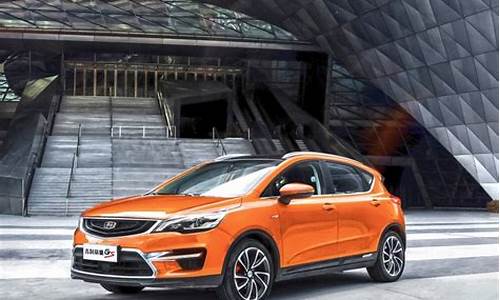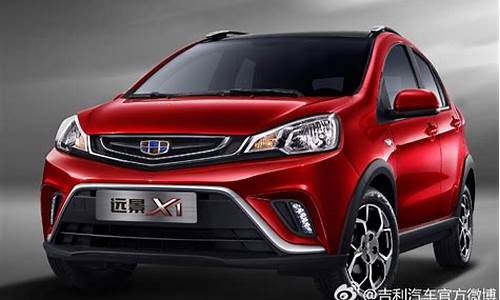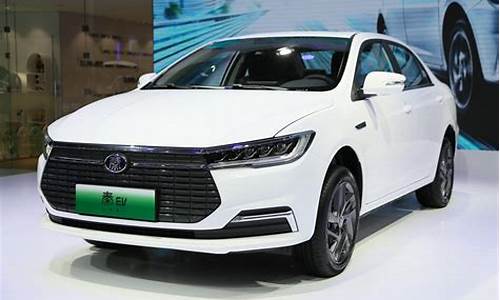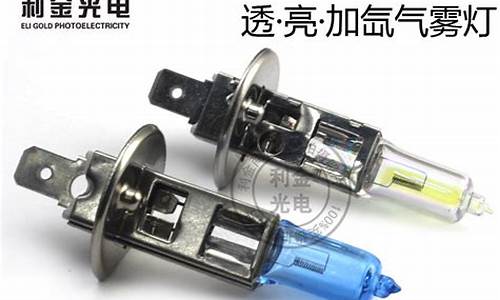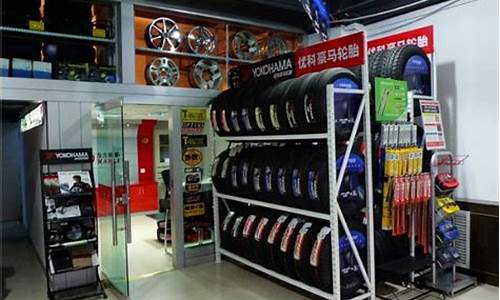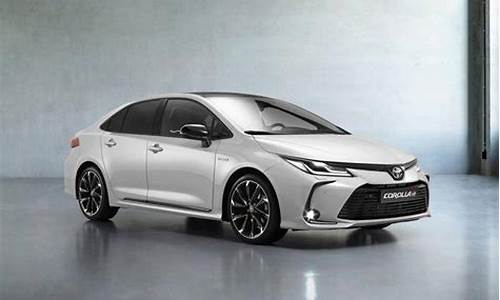保时捷911c_保时捷911车长
1.保时捷911算不算超跑
2.保时捷918和911有什么区别
3.保时捷911什么时候上市
4.保时捷911tubro的英文介绍
5.保时捷911到底算不算超跑?
6.保时捷911一般落地价多少?
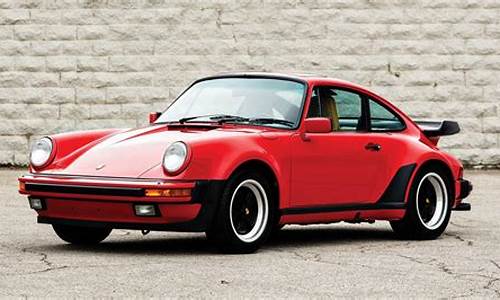
官方指导价146万元,加上一些配置裸车价1647700元,另外加上购置税、车船税、保险等必要费用后全款落地181.42万。
其实去过保时捷4S店的朋友都知道,不管是什么价位的车型都一定要选配一些配置才能够下订单。无论是保时捷最便宜的Macan还是718,还是上百万的911、Panaamera,都要通过配置选购之后才能下订单。
介绍
保时捷911是由德国保时捷公司所生产的跑车。由费迪南德·亚历山大·保时捷所设计的作品。保时捷911系列分为Carrera系列、 Targa系列、Turbo系列、Turbo S系列、GT系列。
从1963年诞生以来,共经历了八代车型,因其独特的风格与极佳的耐用性享誉世界,保时捷911系列是整个保时捷乃至于整个德国整个世界最的车型之一,同时也是中后置引擎跑车的代表作之一。
保时捷911算不算超跑
保时捷911官方指导售价区间为122.80-389.80万元,实际裸车成交价基本没有优惠。由于是进口车型,以2017款保时捷911 turbo S exclusive series 3.8T车型为例,其裸车成交价为300.31万元,而实际落地价则需要332.88万元。
2018年11月28日,保时捷(2019款)全新911在美国洛杉矶正式全球首发,即日起中国市场同步启动新车预售,其中,911 Carrera S售价149.8万元,911 Carrera 4S售价157.8万元。全新一代911其代号为992,在造型上大部分延续了上一代的经典设计,同时进行了大量创新。
全新(2019款)911的前保险杠改为贯穿式设计,用左右贯穿式的LED尾灯,下方镶嵌保时捷英文LOGO,同时发动机进气口也更改为垂直格栅设计,其上有高位刹车灯。新车内饰经过重新设计,用了中控液晶屏和液晶仪表盘,并用更多的触摸化控制,并且电子档杆首次在911车型上出现。
动力性能方面,2019款保时捷911 Carrera S 与911 Carrera 4S最大输出功率可达331 kW,较上一代车型提升了22 kW,峰值扭矩为530 Nm。两车百公里加速时间均突破4秒大关:后轮驱动的911 Carrera S需3.7秒,四轮驱动的911 Carrera 4S仅需3.6秒, 分别较上一代车型缩短了0.4秒。
百万购车补贴
保时捷918和911有什么区别
不算。保时捷911起价18.4万美元(约121.1万元人民币)达不到价格标准。
超级跑车即人们常说的超跑。一般是指拥有高强动力输出、出众外形的跑车,价格一般高达数百万至千万,最高时速可达300km/h以上,大都只含两个座位。超级跑车的加速、刹车和操控都很出色,非凡的外表也必不可少。
据美国媒体Leftlane3月1日报道,日前2017款保时捷911R在日内瓦车展上正式亮相,为911系列新车,起价18.4万美元(约121.1万元人民币)。
保时捷911R与911GT3车型极为相似,但并没有使用像GT3上的大型后扰流板。新车配备6速手动变速器,4升的水平对置六缸发动机最大功率可达368kW,峰值扭矩460Nm,性能堪比现代跑车。保时捷公司透露,该车0至96公里/时加速时间3.7秒,最高车速可达321km/小时。
扩展资料:
保时捷CarreraGT是保时捷历史上第一辆量产超级跑车,2006年停产,0-100km/h加速时间3.5秒,0-200km/h加速时间10秒以内!330公里/时的极速同样令人称道。
CarreraGT前端展示了典型保时捷车的脸部:像箭形的车盖向后延展和两侧加大的车轮弧形,取了60年代后期著名跑车718RSSpyder的设计方法。它是保时捷将造车工艺发挥到极致的一部作品,它身上集合了很多保时捷总结了半个世纪的赛车技术。
百度百科-超级跑车
百度百科-保时捷
人民网-披着羊皮的狼?保时捷911R亮相日内瓦
保时捷911什么时候上市
1、速度不同
据海外媒体报道,保时捷已经完成了旗下918的打造和测试。这款混动超跑的百公里加速在3秒内,同时极速达到了345km/h。
官方公布0-100Km/h加速时间为2.6秒,但是保时捷的员工私下说918能够跑进2.3秒。
2、外观不同
这款918用了黑色的车身设计辅以白色的线条,这样的设计是向917赛车表示敬意。这款车具有自适应后桥转向、碳纤维车壳、完全自适应空气动力学套件等等先进配置。
3、发动机不同
动力方面,保时捷918用插入式混动系统,包括一个最大功率输出608马力的4.6升V8发动机,两台电动机分别驱动后桥和前桥,可以让总动力达到887马力。最大扭矩500N·M,最大功率转速8700转,最大扭矩转速6500转。
保时捷911tubro的英文介绍
1963年。
1963年,保时捷911第一次展出是在法兰克福车展上,当时在车展上用的名字叫保时捷901,但标致汽车公司提出抗议,因为标致汽车公司已经把所有中间带0的三位数字都注册了并作为该公司生产车型的代号。保时捷在第一次批量生产时把名称更名为“911”。
车型参数:
第一代911的底盘和传动系统较多地沿用了保时捷356的技术,包括四轮碟式制动器和后悬挂,前悬挂则为全新开发。
相较于356使用的1.6L四缸发动机,911虽然同样用后置的气冷式水平对置发动机,但是排气量提升为2.0L,汽缸增加为六具,这台发动机最大功率为130马力,峰值扭矩161Nm,与之搭配的是一款新的5速密齿轮比手动变速箱。从0加速到100km/h时间为9.1s,最高速度210km。
扩展资料:
911的发展历程:
1、第二代911,时间:14年至1989年。
14年,911车型进入第二代,2.7L发动机成为911的主流配备。此外,Carrera车型也被正式推出,Carrera这个名字来自于20世纪50年代墨西哥举办的泛美越野大赛(Carrera Panamericana),保时捷凭借其550型汽车赢得了1953年小型车级别的冠军,之后便将旗下的许多车型加以Carrera后缀以资纪念。
2、第三代911,时间:1989年至1993年。
1989年,第三代911(964)系列开始升级换代。发动机、驱动装置、转向传动系统、轮轴、轮毂和轮胎等设备都进行了技术革新,此外,保时捷第一次批量化装备ABS和安全气囊。
4、第四代911,时间:1993年至1998年。
1994年,第四代911(993)推出,圆形大灯的坡度变缓,整体造型趋于柔美。已经连续在两代911上应用的连贯式尾灯在993上依然保留。993的首款Carrera车型使用一台3.6L发动机,最大功率为272马力。
5、第五代911,时间:1998年至2005年。
19年,保时捷在法兰克福车展上展出了新一代使用水冷发动机的911(996),这次改变主要是为了符合全球范围内的废气排放标准。在外观上,第五代911使用了类似保时捷Boxster的泪囊式大灯组合,这是911首次不使用其标志性的蛙眼大灯组合。
6、第六代911,时间:2005年至2011年。
第六代保时捷911(9)延续了保时捷911四十年来一贯坚持的运动传统,车身外观变得更为流畅简洁,经典的圆形大灯,前鬼脸大灯下增加了两个小灯。911(9)提供两种排量的车型,其中Carrera用325马力的3.6L发动机,Carrera S用是355马力3.8L发动机。敞篷型和四驱车型也相继推出。
7、第七代911
时间:2011年
2011年,广州车展上保时捷正式发布新一代911(代号为991)。新车型共两款,在外观细节方面,保时捷进行了与时俱进的修改和调整,雾灯和前导流版用了一体嵌入式的设计。新车尾部,后车灯也进行了重新设计,造型更显锐气与动感。
此外,新车的后外视镜被安置到了车门上,后扰流板也进行了加宽处理,并可伸展以提高行驶稳定性。 此外,新一代保时捷911 Carrera的轴距比上一代保时捷911 Carrera的轴距长100mm,达到2450mm。
百度百科-保时捷911
保时捷-911系列
保时捷911到底算不算超跑?
concept
When Porsche develops a new Turbo, enthusiasts don’t expect us to push the envelope. They expect us to shred it. The new 911 Turbo surpasses those expectations. It’s the first 911 Turbo with Variable Turbine Geometry (VTG). The first with actively controlled all-wheel drive. The first to reach 60 mph in less than four seconds. Altogether, it’s the most rewarding 911 Turbo yet.
design exterior
From the production of the first model in 14, the 911 Turbo has never hidden its intent. The newest model continues this tradition with a design that is singularly powerful. Like the turbochargers under its skin, the body of the 911 Turbo is a model of aerodynamic control. The body’s aerodynamic profile has been painstakingly tested to create positive downforce at the rear, without speed-rog drag. The drag coefficient is remarkably low at just 0.31.
The new front is designed to put onrushing air to optimum use. Massive air inlets direct cooling air to the twin radiators located in the car’s nose. High-powered lighting technology plays an important supporting role. The new headlamps echo the traditional 911 design, with the modern advantage of ultra-bright Bi-Xenon lighting and an integrated cleaning system. Compact fog lamps and turn indicators assist in creating undisturbed airflow.
The side air intakes behind the doors provide efficient air delivery to the twin intercoolers. As is typical in Porsche racing cars, air ducts are also directed to both the front and rear brakes; their cooling action plays a key role in eliminating brake fade. Black plastic sills along the sides of the body provide effective protection against stone chips.
The new 911 Turbo is much wider across the rear than the front. The generous wheel track and wider tires provide for massive lateral grip. The new engine lid design features an integrated rear splitwing spoiler; the upper wing element is automatically raised at roximately 75 mph (120 km/h) and lowered at around 37 mph (60 km/h). The purposeful side air outlets and fully enclosed twin tailpipes are a further indication of the power within.
interior design
The interior of the car is equally compelling and entirely designed around the driver. The high-quality surfaces include a full leather finish on the standard electric seats as well as the dashboard, doors and rear side panels. Two sports seat options are also ailable, one featuring adaptive adjustment. The standard equipment package includes a new gear-knob design - created exclusively for the 911 Turbo - and a three-spoke sports steering wheel featuring 1.57 in. (940 mm) of height and reach adjustment.
Every detail of the new 911 Turbo is a direct expression of power, composure and comfort. The design makes a clear statement: a new era has arrived for this legendary sports car.
history
Over the past century, the turbo concept has undergone multiple uses and refinements. It was first embraced by the iation industry, which used turbochargers to provide more oxygen to engines during high-altitude flight. In the 1930s, turbochargers were lied to diesel engines, to compensate for their relatively slow acceleration.
Porsche was among the first to realize the potential of the technology for racing engines. Using high-boost turbochargers, Porsche engineers developed small displacement engines that produced astounding power for their size and weight.
Porsche’s first turbo racing car set the bar high, in every sense. The 917/10 was created for the 12 CanAm Championship, which placed no restrictions on engine size or power. Porsche met the challenge with a five-liter, twin-turbo engine that developed 1,000 horsepower. It won half the series races and captured the championship. In 13, Porsche fielded the 917/30. The most powerful Porsche ever, its 5.4-liter engine developed 1,100 horsepower. It proved practically unbeatable.
One year later, the first 911 Turbo was born. Arriving in the midst of the first oil crisis, it was a bold statement—and looked the part. Wider wheel arches were essential, to accommodate larger tires capable of handling 253 lb.-ft. of torque, the highest ever achieved by a 3-liter engine at the time.
Aerodynamic changes were also a must. These included a fixed front spoiler and the now-legendary rear wing, which helped keep the tires planted at speed. Developing 260 horsepower, the car could sprint from zero to 62 mph (100 km/h) in just 5.5 seconds. The legend had begun.
The second 911 Turbo arrived in 17 with several notable advances. Its larger 3.3-liter engine was the first to feature an intercooler, which further improved intake air density and helped the car break the 300-hp barrier. With so much power on tap, brake performance was also enhanced with four-piston, aluminum fixed calipers and cross-drilled discs. In 1993, Porsche launched the last 911 Turbo to feature dedicated rear-wheel drive. Based on the latest 911 platform (Type 964), it used a 3.6-liter engine to achieve a major boost in output to 360 horsepower.
A technological tour de force, the Type 993 Turbo arrived just two years later. This was the first 911 Turbo with twin turbochargers, which helped develop power more quickly and smoothly. Although displacement was unchanged, output leapt to 408 horsepower. It was also the first Turbo with allwheel drive, providing greater active safety and driving dynamics.
In 2000, a new Turbo was introduced based on the Type 996. Although it too was powered by a 3.6-liter engine with twin turbochargers, this was a radically new power plant, featuring the first lication of water cooling and the first use of VarioCam Plus in a 911 Turbo. These advances improved fuel economy while boosting performance to 420 horsepower, propelling the car to 62 mph in just over 4.2 seconds. In 2005, a Turbo S version boosted power to 450 horsepower.
For over 30 years, the 911 Turbo has established itself not as an icon, but as an iconoclast: Each generation has crushed old beliefs about the limits of sports car performance. The new 911 Turbo builds on that tradition. With its unprecedented acceleration and handling dynamics, it makes a thrilling leap forward in performance, ride comfort and visual presence.
保时捷911一般落地价多少?
这个问题,因为全世界并没有一个对“超跑”的明确定义,所以一千个人心中有一千个哈姆雷特。
那在我阐述自己的观点之前,我们先来看看百度百科是怎么介绍超级跑车的。
从百度百科的定义来看,除了“非凡的外表”911至少Carrera是差点意思之外,其余的大都基本满足。
但是再往下看,“Carrera?GT是保时捷历史上第一辆量产超级跑车”,这就说明,至少从百度百科的意思来看,911并不是超级跑车。
好了,这是百度百科的观点,现在该来谈谈我的观点了。
虽然百科在我心中并不具备什么权威性,但至少在这个问题上我们的结果是一致的。我也认为,保时捷911并不算超跑。
我认为,超级跑车关键在于超级两个字!超级的加速,超级的极速,超级的过弯性能,超级新的技术应用,以及对极致性能的追求和Unique?(独特,专属,体现在手工生产,惊人的售价和维护费用,稀少的产量)。
至于外观,有人说不重要,但我的观点是一定要超级惊艳,要让所有人包括不懂车的在内一眼看去就觉得很贵,否则的话,像是M?Power、AMG以及Audi?Sport等出产的顶级性能车也能满足上述要求,那它们能算做超跑吗?
而引擎的位置,中置、后置亦或者是前置这都不重要,毕竟知名超跑奔驰SLR、SLS、雷克萨斯LFA、法拉利12缸产品线(812Superfast、F12、FF、599GTB、575M、?550等等)都是前置或者说是前中置的。
品牌嘛,就更不能算衡量超跑的标准了。上述车型中的奔驰雷克萨斯等本就是普通的豪华品牌并不是超豪华或超跑品牌,而且,你认为非豪华品牌的福特GT不是超跑吗?
所以,我个人对于超跑的观点,简单来说就是极致的性能、惊艳的外观以及Unique性。
相比起入门级跑车和性能车,其实最重要的就是Unique。
举个例子:日本到现在有多少款超跑?算来算去也就两款:LFA和NSX。
3000GT、300ZX、RX7、Supra甚至包括GTR等虽然也是让全世界疯狂的驾驶机器,但只有NSX、LFA才是按照精益求精的标准去设计制造的。除了这两台之外的其他车型,就是个性能车或入门级跑车,本质与AMG等是相似的,完全不具备Unique性。
911也是如此。
要论Unique性和极致的性能,Carrera但性能这一项怕是就进入不了顶级的行列,这应该是大部分人所认同的。如果它也算,科尔维特ZR1,科迈罗ZL1不也是超跑了吗!
Turbo、GT系列虽然性能是够了,但实际上它是建立在普通版911的基础之上,说白了它还是911,只不过是升级改进版,与488、570、Huracan等入门级超跑还是不一样。911最初的定位就是平民跑车,直到今天911从设计初始也依然不是追去极致性能和惊艳外观,Turbo等也都是后面升级而来。
当然了,以上都只是个人观点。
毕竟,只要心中有...,开啥都...。
所以,你认为,911算超跑吗?
本文来源于汽车之家车家号作者,不代表汽车之家的观点立场。
官方指导价146万元,加上一些配置裸车价1,647,700元,另外加上购置税、车船税、保险等必要费用后全款落地181.42万。
保时捷最的独特的混动跑车918,国内售价在1388.8万元,是保时捷现售车型当中售价最高的一款。当然保时捷为了突出车主的身份,全球仅仅限量生产918台;
扩展资料:
五个车型:
1、Carrera系列
在整个保时捷911的产品序列中,Carrera系列的车款最多,拥有Carrera Coupé、Carrera Cabriolet、Carrera S Coupé、Carrera SCabriolet、Carrera 4 Coupé、Carrera 4 Cabriolet、Carrera 4S Coupé、Carrera 4S Cabriolet共8款车型。
其中“Coupé”代表硬顶车型、“Cabriolet”代表敞篷车型,而标志中的“4”代表四轮驱动车型、“S”代表运动款车型。Carrera系列是保时捷911系列的主打产品,也是整个911车系的灵魂。
2、Turbo系列
保时捷911 Turbo的发展历程可以追溯到14年,第一代涡轮增压911车型是在法国巴黎车展上亮相的。当时正值经济衰退和石油匮乏时期,保时捷在这种情况下推出了这款“追求高效率“的新概念跑车——911turbo。
根据定义,效率是指工作输入与工作输出之比。高效率的设备都能以较低的输入实现更大的输出功率,而保时捷911 Turbo就是遵循这一理念而诞生的。从第一代车型开始,911 Turbo就颠覆了当时跑车界奉行的“排量等于功率”的规则。保时捷911 Turbo仍在延续这一理念。
在保时捷911 Turbo系列中,911 Turbo Coupé和911 Turbo Cabriolet装备了排气量为3.8L的涡轮增压发动机,其最大功率达到368kW,最大扭矩则达到了650Nm。
3、Targa系列
保时捷911 Targa无论是在整体风格还是在外观造型方面,保时捷911 Targa都独具特色、精美绝伦。这款极富典雅气息的911跑车设立了自己的美学标准,透明车顶从挡风玻璃框一直 延伸到发动机舱盖,为乘客打造出了一个亲近大自然的车内环境。
保时捷911 Targa的天窗由一个前部滑动模块和一个折叠式后车窗组成,面积高达1.54平方米。前部滑动式天窗全部展开有半米宽,展开面积则可达到0.45平方米,能够在尾门下方平稳滑行。
滑动式天窗的后一部分由加热式尾门组成,宽大的尾门可平稳地自由展开,开启后会在前排座椅后方拥有一个容积为230 L的储物空间。
4、TurboS系列
作为911 Turbo系列的强化版本,911 Turbo S Coupé和911 Turbo S Cabriolet在性能上实现了进一步提升。其最大输出功率比911 Turbo高出22kw,达到了390kw,而最大扭矩更是达到了700Nm,是911车系中最为强劲的民用版本车型。
保时捷全新9系列911 Turbo S搭载六缸水平对置双涡轮增压发动机,这套涡轮带有可变涡轮截面技术,其最大马力相比9系列911 Turbo高出30马力,达到530马力,最大扭矩更是达到了700Nm。从0加速到100km/h仅需3.3s,极速可以达到315km/h。
5、GT系列
保时捷911 GT系列追求赛车般的驾驶性能,因此无论是性能配置还是底盘调校都更加强调赛道风格。为了使保时捷911 GT系列的运动感更强,911 GT2、911 GT3和911 GT3 RS都配 备6挡手动变速器,同时极为重视车身的轻量化。
保时捷911 GT2搭载3.6L双涡轮增压发动机,最大功率达到340kW的,最大扭矩达到620Nm。从0加速到100km/h仅需4.1s。从0加速到200km/h只需12.9s,最高车速达到315km/h。
声明:本站所有文章资源内容,如无特殊说明或标注,均为采集网络资源。如若本站内容侵犯了原著者的合法权益,可联系本站删除。

